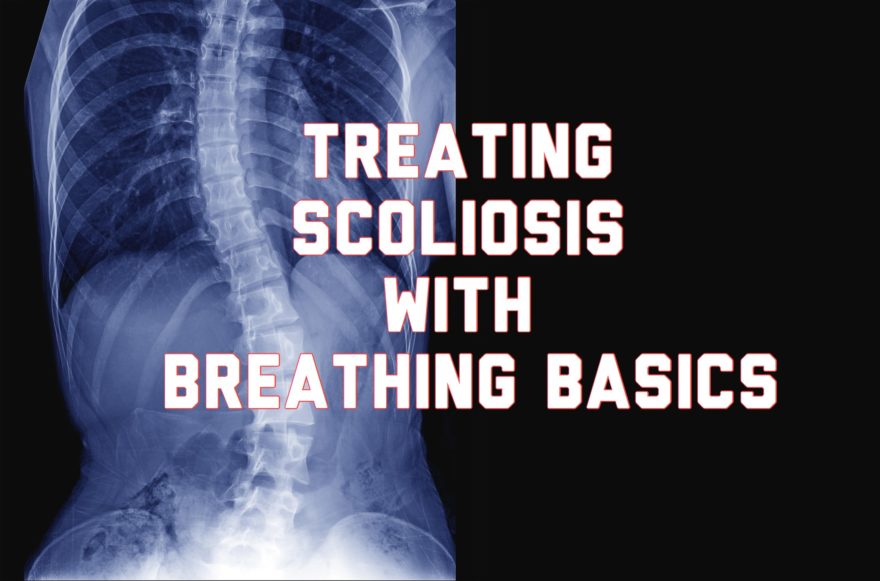Have any clients with scoliosis?
Scoliosis can be quite a bugger and have some interesting consequences on an individual’s movement. I bet you feel unsure how to best help them maximize movement.
Even though people can have wild and crazy curves, utilizing a systematic approach that looks at the entire movement system can have profound effects.
I recently had the opportunity to run through a client with Scoliosis during Human Matrix: The Code for Maximal Health and Performance, where I was able to employ some of the skills taught in the class to lead to some nice movement changes.
In this case study, you’ll see just how far coaching the basics savagely well can improve someone’s movement. We focused in this case on finding the best position for her to maintain the breathing strategies advocated in the seminar. And the results…well, you’ll just have to tune in and find out.
If you want to attend and learn how to incorporate these skills with your clients, here is the 2019 course list, with more on the way:
February 2nd-3rd, 2019, New Providence, NJ
June 8th-9th, 2019, New York, NY (early bird ends May 10th at 11:55pm)
August 3rd-4th, 2019, Cincinnati, OH (early bird ends July 5th at 11:55pm)
August 24th-25th, 2019, Vancouver, BC (early bird ends July 26th at 11:55pm)
September 21st-22nd, Raleigh, NC (early bird ends 8/23/19 at 11:55pm)
October 5th-6th, Boston, MA (early bird ends 9/6/19 at 11;55pm)
Some of the cool things you will learn in this case study include
- A comprehensive assessment and rationale why each test is done to build a movement foundation for your clients
- How to coach basic breathing mechanics to maximize trunk and pelvis mobility
- How to utilize a test-retest system to ensure your exercises are getting the client results
- Why pain is rarely a deciding factor in decision making
- Why restoring movement variance can help with pain
- How do we transfer lower level activities to higher level activities
Enjoy the video and selected notes below!
Table of Contents
Subjective
Allison is a multisport athlete with some right shoulder, knee, and QL pain. Has been braced in the past for her scoliosis. Most of her curves are in the lumbosacral region. She wants my input on her movement.
Examination
Below were Allison’s test results:
| Test | Left | Right |
| Toe touch | Palms floor, right rib hump | |
| Straight leg raise | 87° | 87° |
| Hip External Rotation | 60° | 60° |
| Hip Internal Rotation | 25° | 20° |
| Infrasternal Angle | Narrow | |
| Shoulder Flexion | 180° | 180° |
| Shoulder External Rotation | 100° | 105° |
| Shoulder Internal Rotation | 80° | 90° |
| Shoulder Horizontal Abduction | 10° (lax) | 17° (lax) |
| Hip Adduction | -20° hip extension | -15° hip extension |
| Hip Abduction | 20° | 20° |
Assessment
Allison is a narrow infrasternal/infrapubic angle with classic limitations that would fit that presentation. As expected, pump handle is down, which is likely a contributing factor to the slight IR limitations as well as scapular position that encourages the horizontal abduction limitation.
The surprising finding was the limited hip abduction, as this is normally full with narrow ISA/IPA. Likely, she has increased anterior orientation of the pelvis that concentrically oriented adductors.
My top priorities for Allison are restoring buckethandle action of the ribcage, increasing hip extension, and if she can keep lower ribcage position during breathing, drive air into the anterior thorax.
Make the Thorax and Pelvis Dynamic AF – Exercise #1
The breathing was emphasized in a manner to encourage lower thorax buckethandle mechanism. The hooklying position was chosen to drive hip extension. I used a forward reach without a squeeze to encourage some pump handle mechanics also. Had I went with a pec squeeze, we would not have gotten the pump handle action.
When Allison reached, she was getting too much rectus abdominis. This is undesirable because it would impair the pump handle mechanism from occurring. To mitigate this, I put a pillow under her head, cued a soft exhale, and it was money.
I also threw in hip IR to bias the normal pelvis mechanics and open up the pelvic outlet, which would allow me to get more glute max.
Below is a video of the activity,.
Exercise #1 Results
Below are the changes Allison exhibited with exercise #1.
| Test | Left | Right |
| Toe touch | Palms floor, right rib hump | |
| Straight leg raise | 87° | 87° |
| Hip External Rotation | 60° | 60° |
| Hip Internal Rotation | 40° | 30° |
| Infrasternal Angle | Narrow, but improved on right | |
| Shoulder Flexion | 180° | 180° |
| Shoulder External Rotation | 100° | 105° |
| Shoulder Internal Rotation | 90° | 90° (softer end-feel) |
| Shoulder Horizontal Abduction | 12° (lax) | 17° (lax) |
| Hip Adduction | -10° hip extension | -10° hip extension |
| Hip Abduction | 20° | 20° |
Almost all of Allison’s measures are trending in the right direction, but the need for hip extension and pump handle mechanics is real. I think continuing to go after these limitations ought to clear hip extension and shoulder horizontal abduction.
Q&A
Sum Up
Solid changes for a quick session. I thought that we found a great starting position for Allison, and have thoughts as to where to progress her next.
To summarize
- Basic breathing and pelvis position is the first priority
- Tissue ischemia is a plausible mechanism as to why restoring movement variance is beneficial
- Progress should involve challenging movement limitations in more complex scenarios
- Load management should occur along with a variance restoration program
What was your big takeaway from this case study? Comment below and let us know!

